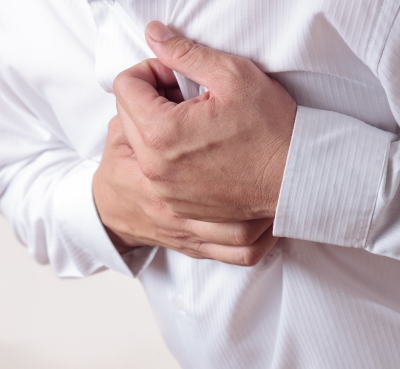
Today’s edition of Noosa River Living magazine is running a story about the book. You’ll be relieved to know that, for once, it’s not just me banging on about fructose.

I know most of you will have already read Fructose intake is a predictor of LDL particle size in overweight schoolchildren (published in the American Journal of Clinical Nutrition last October for those of you who missed it), but dust off your copy because I want to take a closer look. Grab a coffee, this is a long one.
I think the schoolchildren paper explains exactly why many things we have been told about Cholesterol could be wrong and why many of the people taking medication to lower it may be simply doing so for no better reason than to line the pockets of some underprivileged drug companies (a noble cause in itself, I admit). The current treatment of arterial disease is based on restricting the intake of animal fat, with or without drugs. But, there is mounting evidence that fructose plays an important role in modifying the fats in the blood in ways that block your arteries a lot more quickly.
That having been said, nothing in this post (or on this blog) should be taken to be medical advice. Don’t rush out and cancel your medication (or your prescibed diet) unless your doctor tells you to. But do by all means discuss the studies presented here with your doctor.
Ok, disclaimer over, let’s start from the start. Contrary to popular belief there is only one kind of cholesterol. There is no good, bad or even ugly cholesterol. There’s just cholesterol. Cholesterol is a fat and is therefore not soluble in water. Since our blood is a water-based solution this presents a bit of problem in the logistics department. Cholesterol needs to be transported from the liver (where it is made) to the places where it is needed (pretty much everywhere in the body – it’s used to make cell membranes). That’s where lipoproteins come in. The body packages the cholesterol with some proteins in a bundle of molecules ready for shipping.
Lipoproteins are the transport system for cholesterol (and other fats). There are five major groups of lipoproteins but I want to focus on the group that the doctors sometimes call ‘bad cholesterol’.
Lipoproteins are grouped by size. Low Density Lipoproteins or LDL particles are loosely packed (hence ‘low density’) and as a result, relatively large. LDL particles transport cholesterol manufactured in the liver out to the cells.
When a doctor says you have a bad cholesterol reading, she is talking about LDL being outside a target range (2.6 to 3.3 mmol/L). If you get too far out of that range (greater than 6.5 mmol/L), out will come the ‘script book and there is a good chance you will be prescribed a class of drugs called Statins (more on them in a later post) to lower your LDL cholesterol levels.
LDL particles also come in a range of sizes and people can be divided into two main groups according to which size is most common. Some people have mostly large LDL particles and some people have mostly small ones. The folks with the large particles are called Pattern A and the others, Pattern B. Whether you are Pattern A (large) or Pattern B (small) is largely a matter of genetics. If both your parents are Pattern A then you are more likely to be Pattern A and vice versa if they were both Pattern B.
Which pattern you are matters because if you are Pattern A, your LDL reading is not an indicator of the risk of heart disease. But Pattern B people are at considerable risk. It seems the small size of the Pattern B LDL particles means they are more easily embedded in the walls of blood vessels and this ultimately leads to the development of blockages.
In June 2000, Dr Krauss and his team over at the Lawrence Berkeley National Laboratory, Department of Molecular Medicine at UC-Berkeley published some very interesting results on experiments they had been doing on low-fat diets. What they found was that if you put a Pattern A person on an extreme low-fat diet (less than 25% of the Calories come from fat – the Pritikin diet for example, is 10%-15% fat), they change to Pattern B.
Let me just restate that because it is important. In June 2000, a study was published which showed that if you put some people on a low fat diet you INCREASED their risk of heart disease. This happened because you convert them from Pattern A (large) LDL to Pattern B (small) LDL particles. Did the media health experts forget to mention this as they merrily recommended low-fat foods?
As far as I can tell, Dr Krauss wasn’t concerned what else was in the diet, just that it was low fat. And this is where the article that started my little detour comes in. The schoolchildren paper from 2007 concludes:
“In school-age children, greater total and central adiposity [fatness] are associated with smaller LDL particle size and lower HDL cholesterol. Overweight children consume more fructose from sweets and sweetened drinks than do normal-weight children, and higher fructose intake predicts smaller LDL particle size.”
In other words, a child on a high fructose diet will have small (Pattern B) LDL particles and a child on a low fructose diet will not. Maybe the reason that Dr Krause’s low-fat diet was so destructive was not because of the fat itself but because the diet was by definition high carbohydrate (and therefore high fructose in our modern world)?
There’s a double whammy in all this. Most Low-fat foods you will encounter in the supermarket are higher in fructose than their full-fat equivalents. So whether it is the low-fat or the high fructose part of the diet that is causing the LDL particles to shrink, foods low in fat and high in fructose are probably not a good idea.
Unfortunately there are no cheap and easy tests for LDL particle size. But if this latest study is to be believed, maybe you don’t need to know. Maybe all you need to know is that you can significantly reduce your risk of heart disease by not eating fructose. This is because this most recent study suggests that the amount of fructose in your diet so accurately predicts your LDL particle size (at least if you are a school age child).
This post has droned on for long enough so I won’t go into the studies that suggest that once again pre-menopausal women are protected from the effects of fructose on particle size. I’ll leave that for another day.
Image courtesy of Nutdanai Apikhomboonwaroot / FreeDigitalPhotos.net
A few people have heard that I appeared on A Current Affair last night and asked that I post a link to the video – so here it is.
few people have heard that I appeared on A Current Affair last night and asked that I post a link to the video – so here it is.

It’s all the rage in California and now in London. Agave is pitched as the ‘natural’ alternative to all that awful processed sugar. But what is it?

I know this is going to come as a real shock to you, but apparently Australians have gotten quite a bit fatter in the last decade. A report released today reveals that in the last decade alone the number of overweight and obese Aussie’s jumped from 41.1% in 1998 to 59.3% now. If we keep going at this rate we’ll no doubt all soon be visible on satellite pictures.
Even in the US, where all kinds of unwelcome records are being set for obesity, the figures don’t match the spin. According to the National Federation of State High School Associations, the number of students participating in high school athletics has just increased for the 19th consecutive year. And it’s not just the kids. Their parents have been spending up big on sports gear. Sporting apparel sales are up 35.3% since 2000 and sports shoe sales are up 44.2%. But it’s not all about looking good. Sports equipment sales more than doubled between 1990 and 2008 (from $30b to almost $70b).
It looks an awful lot like we’ve been doing what the ‘experts’ tell us for quite some time. And where has it gotten us? Fatter and sicker and getting worse by the minute. Time for a rethink, perhaps?

There’s a Goatie shortage where I live. I hope it’s fixed soon.
In the book I briefly mentioned that there is research indicating that men and post-menopausal women are the ones most affected by fructose. I theorised that perhaps what was protecting pre-menopausal women was oestrogen. I based that thinking on a line of research which started with a 1966 study by Dr MacDonald from the Guy’s Hospital Medical School in London.
Thank you to all the people who take the time to send me feedback about Sweet Poison. I especially like hearing about how reading the book has changed people’s lives. The email quoted below is an example of exactly that:












Recent Comments